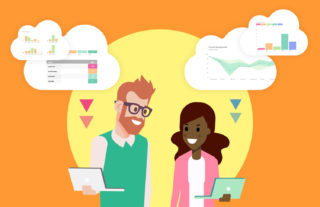What does the Flipped Classroom entail?


Prior to the shutdown of schools due to COVID-19 that prompted the ascent of distance and remote learning methods, the typical classroom across the country had looked similar for decades. Teachers led students in lessons, guiding them through new content and then giving out assignments that the students would complete for homework. Even in the most collaborative environments, this traditional teaching approach presupposed the teacher as “the sage on the stage” and the students as passive receptacles in a banking method of education.

More than ten years ago, however, science teachers Jonathan Bergmann and Aaron Sams had an idea: What if we recorded our lessons and had students watch them before coming to class, so that during our time together, they could engage in higher-order learning activities? Thus the Flipped Classroom method began.
What is the flipped classroom method?
Simply put, the flipped classroom means that the order of the common instructional approach is reversed. In other words, what’s typically done in class is now done for homework; what’s typically done for homework is now done in class. This means that teachers record their lectures and lessons — either as videos or screencasts — and students complete them before coming to class. Classroom time is reserved for students to work on their assignments, do problems together, collaborate on projects, and get help from their teacher.
Mr. Bergmann and Mr. Sams came up with the flipped classroom model based on their experiences with rural schools. From their book Flip Your Classroom:
A problem we noticed right away about teaching in a relatively rural school is that many students miss a great deal of school because of sports and activities. The “nearby” schools are not truly nearby. Students spend an inordinate amount of time on buses traveling to and from events. Thus, students missed our classes and struggled to stay caught up.
And then one day our world changed. Aaron was thumbing through a technology magazine and showed Jonathan an article about some software that would record a PowerPoint slide show, including voice and any annotations, and then convert the recording into a video file that could be easily distributed online…. As we discussed the potential of such software, we realized that this might be a way to keep our students who missed class from missing out on learning. So, in the spring of 2007, we began to record our live lessons using screen capture software. We posted our lectures online so our students could access them.
That was in 2008 when YouTube was only three years old. With technology access now ubiquitous, this strategy of blended learning makes sense and offers many advantages.
What are the pros and cons of a flipped classroom?
There are several benefits to the flipped classroom model. One is that more rigorous learning activities that require a higher depth of knowledge now occur in the classroom, with the teacher available for support. Classrooms become more vibrant learning communities that center on collaboration and deeper learning. Diverse learners and students with individualized education programs feel less alone and overwhelmed. Another advantage is that recorded lessons allow absent students to review material from home and free up teachers from repeating the same lectures over and over again. Moreover, teachers can share lessons with their colleagues — in particular new teachers — to promote best practices and sustainability.
But there are challenges to the flipped classroom method as well. Most important, the practice requires that students have access to electronic devices and wifi at home. As we have witnessed during distance learning, deep inequities persist that prevent many students from learning in blended learning environments. In addition, the flipped classroom assumes that students will complete homework at a high rate. If students don’t do their homework, they’ll come to class confused and unable to engage. Furthermore, even though young people may surf the internet and watch YouTube for fun, they may prefer learning from a real-life teacher.
Why would a teacher use a flipped classroom?
The flipped classroom encourages teachers to ask: What’s most important for my students to learn, and how should they learn it? The answer to that question becomes the work done in classrooms. Activities that support but aren’t central to the most-important work can occur outside of class for homework.
Teachers who use the flipped classroom report that less time is wasted reteaching material and more time is freed up to work with students one on one. Rather than depending on their teacher to answer their questions, students know to consult outside resources to support their learning, which fosters agency and independence. The classroom experience becomes less traditional and more organic, leading teachers and students to work together on more meaningful projects that spark curiosity and make a difference in their school community.
What do flipped classroom activities look like?
Though the flipped classroom began with science teachers, teachers from all disciplines can find value using the method. A math teacher, for instance, can record her lecture on polynomials for students to watch at home, and then spend time helping them actually solve problems in class. Students can watch a video on Malcolm X at home and come ready to discuss his philosophy in a live Socratic seminar. Instead of assigning reading for homework, which many students may ignore, an English teacher can have his students analyze the text in class.
More than 12 years since the beginnings of the flipped classroom, tools to support the practice abound. YouTube is no longer the lone platform that teachers use. Screencasts are much more popular now, as are student engagement platforms like Nearpod. Some teachers are even using Zoom and their iPad to record advanced multimedia lessons.
Are flipped classrooms a part of the future?
As we have seen during distance learning, it’s not uncommon for flipped classroom teachers to spend exorbitant amounts of time on their asynchronous offerings. What remains most important is what happens in the classroom. Fancy online lessons followed by boring in-classroom activities negate the promises of the flipped classroom. Still, with many schools opening with hybrid schedules in the Fall, more and more teachers will incorporate the principles of the flipped classroom into their curriculum design. In many ways, this upcoming school year, every teacher may become a flipped classroom teacher.




